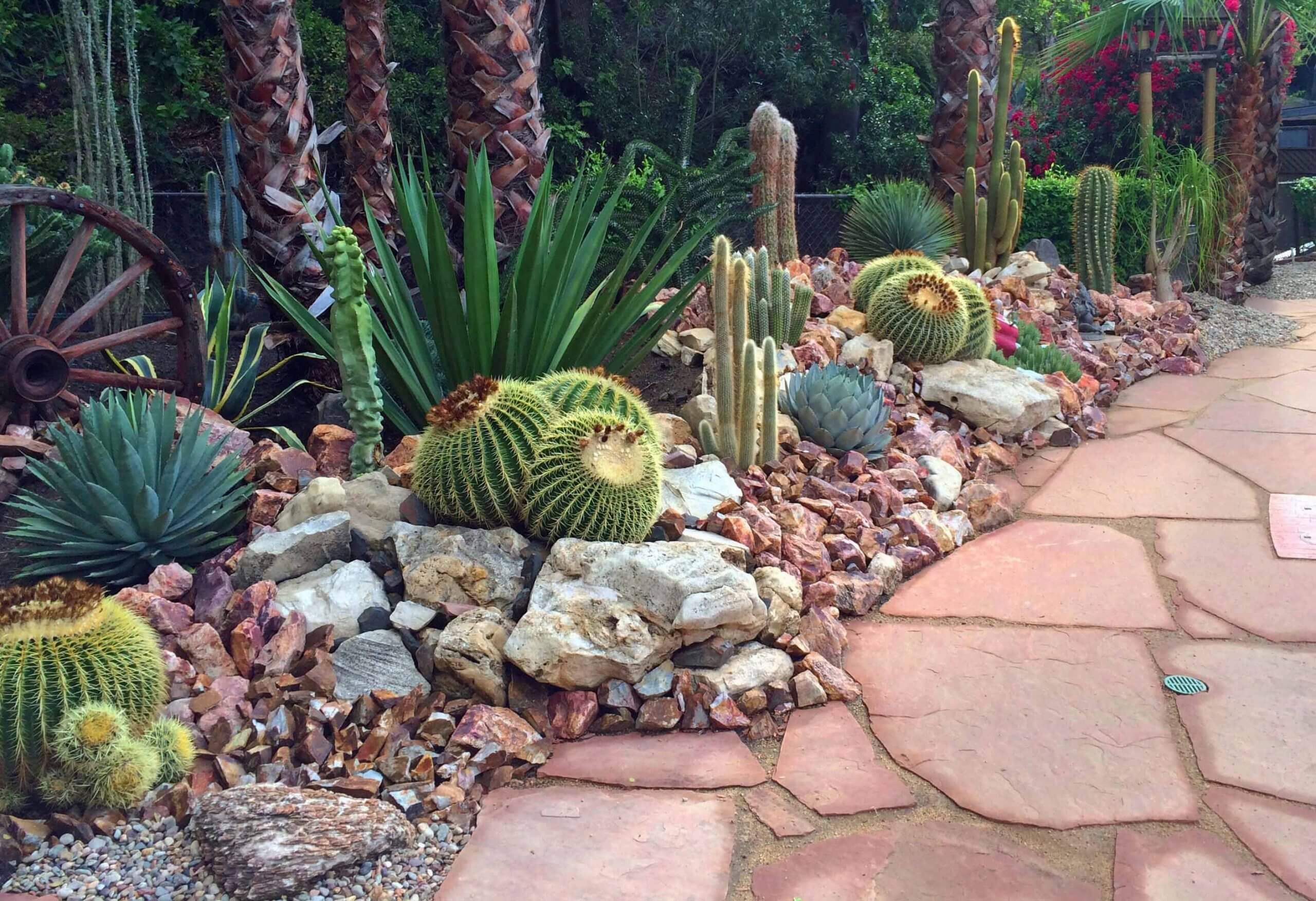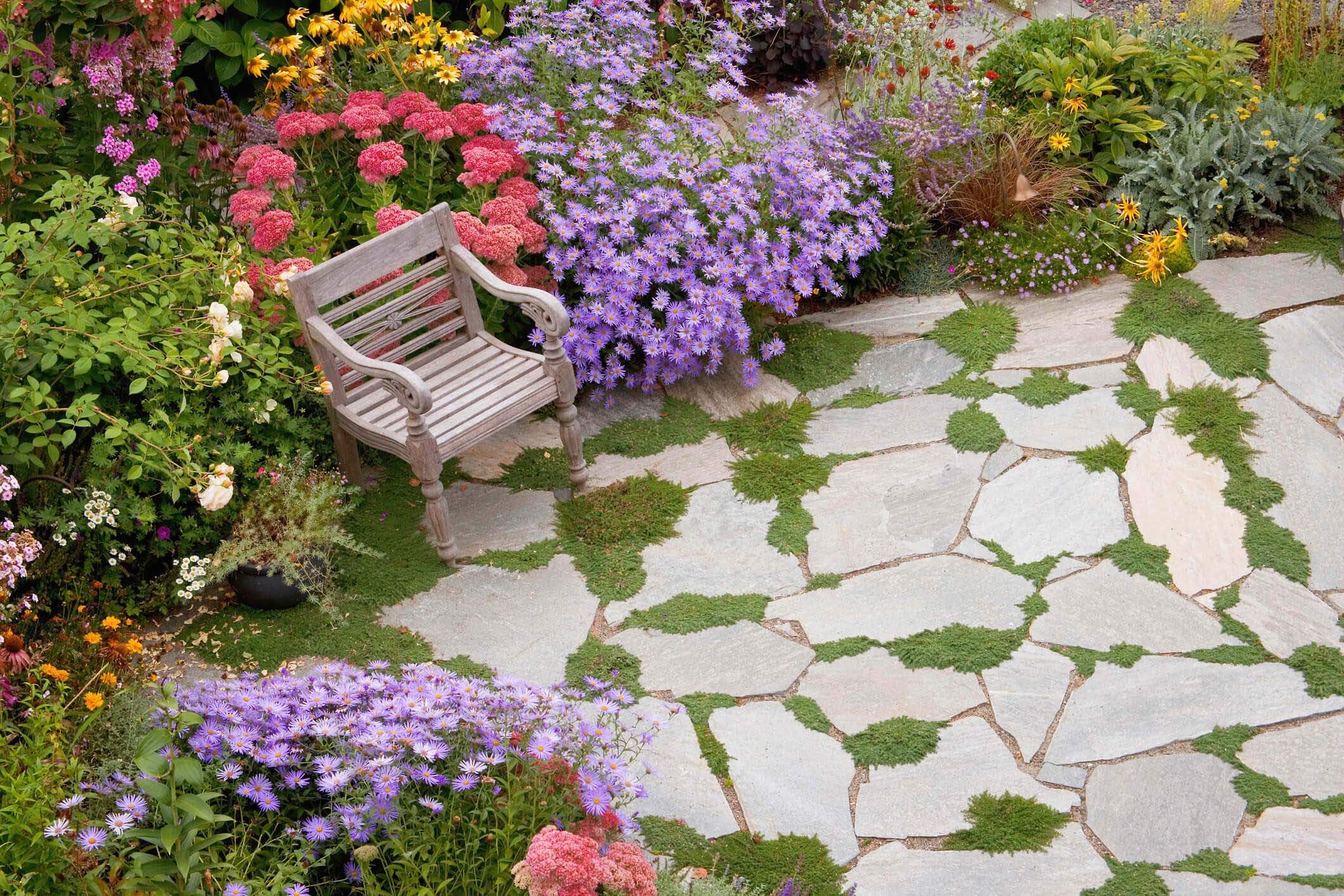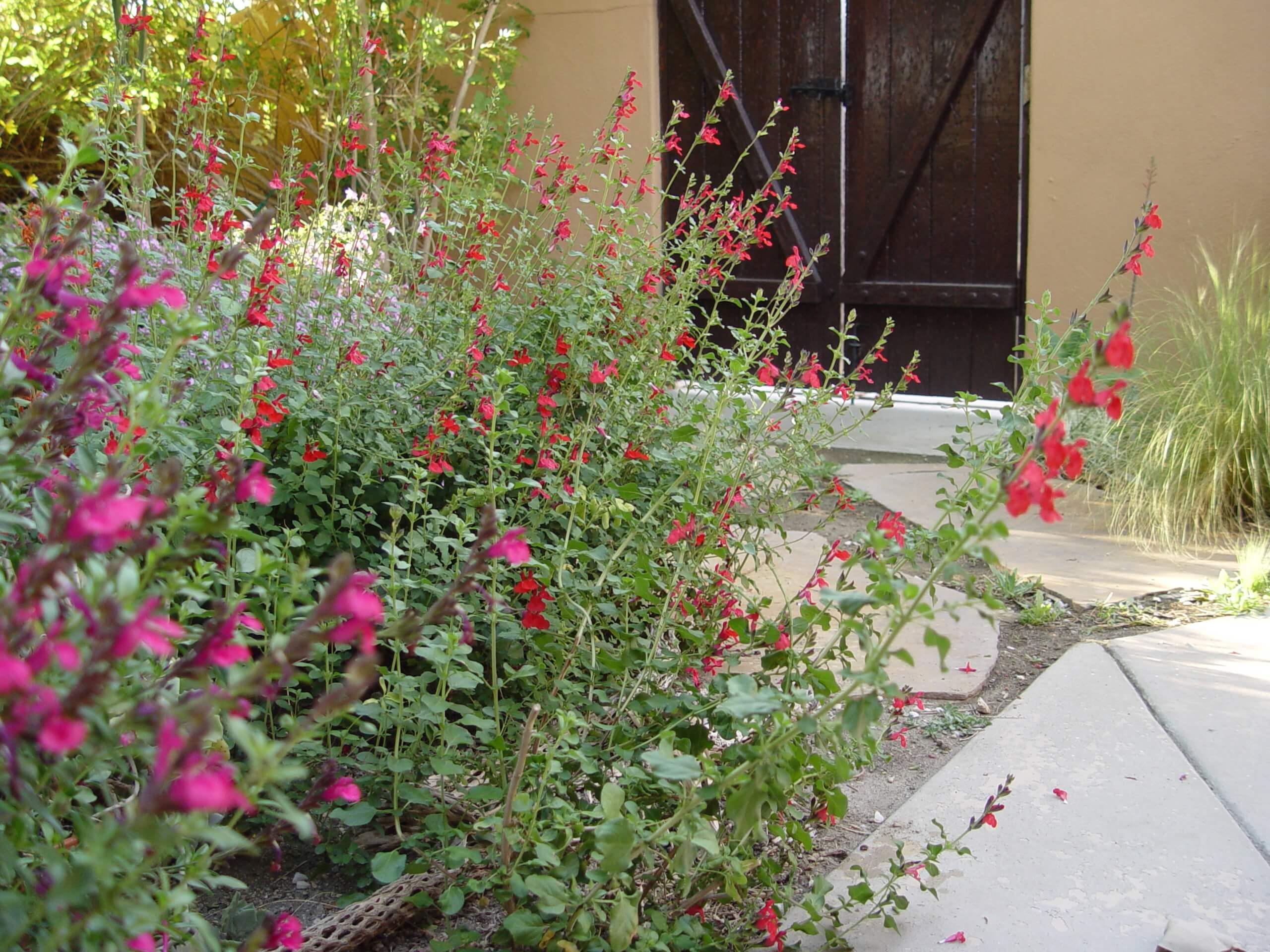
Artists learn early on that the most important parts of a line are the beginning and end points. The quality of the start and end define the line’s value. No matter how light the line weight is between the two points, the line continuum will stay intact because the viewer will naturally extrapolate by filling in a missing or faint center.
This essential working element of design also applies to gardens and landscapes, with garden edges setting the lines that define the flow and focal points of a given space. But, smart landscape and garden designers also consider the functionality of garden edges.
Path and Patio Edge Problems
“New” porous patios and paths have become popular because they facilitate ground drainage, but they can also have hidden design flaws. The trend to design patios that enhance drainage has placed emphasis on the patios rather than the gardens that frame them. The truth is that the most important part of a garden composition is how well the planting line meets a gravel, flagstone, or paver area. A close edge planting is often omitted in porous paving plantings, which leads to erosion and disrupts the visual flow of the design, causing structural and visual disarray for everyone to see.

Unplanted edges and paving gaps are subject to tremendous erosion caused by hard rains powerful enough to dislodge gravel and surface soil particles. The porous fill flows away with runoff and settles out on low ground. The greater the impact of each raindrop, the more soil is lost, creating washout spots, gaps, and hidden cavities under stones. Erosive rains can also undercut the units or frames that hold edging stones in place, creating a double-foot-traffic hazard for tripping.
Once porous paving starts having these problems, impacted plantings may fail to thrive or die, and your pavers may become loose and unsteady. Gravel has traveled and thinned at the edges. Low muddy spots have become a mess and hazard. Getting that patio created was just half the battle. What they didn’t tell you is that unlike solid paving (lay it and forget it), porous paving requires well-planted edges and a little more maintenance.
Plant Your Edges!

Use the mild fall weather to rehabilitate your porous patio and path edges with beautiful plantings that control erosion. Here’s the process:
- Fill low edge spots and pack cavities below pavers or flagstones with natural soil blended with 20 percent Black Gold Garden Soil. Shoot for a soil level at least 1 inch below the top surface of your stones to keep them high and dry.
- Regrade all peripheral soil beyond the garden edges, so it’s not draining back onto the patio when you water. Reset any pavers or flagstones that have shifted or tilted.
- Set your plants along the edges in pleasing designs that consider height and flowering time as well as cultural needs. Choose dense edge plants to hold the soil in place where it has washed out before. Enrich planting holes with more Black Gold Garden Soil to encourage quicker establishment of plants.
- Apply gravel, attractive rock, or dense organic mulch over the top of any exposed soil after planting. This protects against future surface erosion every time it rains.
Edge plantings slow runoff to limit erosion along and below the most vulnerable, outermost paving materials. Their established roots also reduce gravel creep. The right plants for this scenario are low and dense, deep-rooted, and hardy. They should be selected for the exposure of your garden space, be it sun or shade. Most of all, avoid short-lived, easily damaged species, or those with spines and thorns – all unsuitable for this condition.
Once your garden plantings around your porous patio are dense enough, they will protect it from washout, whether the porous material is recycled antique brick mosaic or pea gravel. Just remember, when it comes to porous paving, begin with the edges, and the rest will take care of itself.


